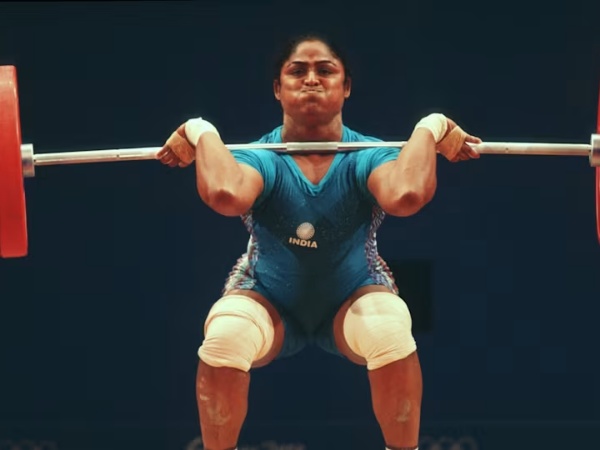views : 801
4 Min Read
Indian fans must look beyond stereotypical stories of Indian sports women
You can call it the domino effect. Or you can simply call it introspection. Or you can call it by any other name, but the stream of thoughts on women’s sport in India has led to a surface-level study of narrative of overcoming difficulties and challenges society places on the way. And on how little attention is paid to how society itself helps athletes give their talent expression.
The trigger was a conversation on role of media in shaping the narratives on women’s sport in India. I recalled a number of pioneering female athletes and women sports administrators who had done really well in the days of yore. My curiosity was also tickled by the glut of stereotypical stories of social barrier-breaking in the recent years.
For long, we have believed tales that focus only on hurdles and discouragement. Of course, the beating-the-odds element is intrinsic to great storytelling. And tales of winning ‘despite’ rather than because of the system have their own place in the pantheon of Indian sports stories. These have remained the key points ahead of valour, competitiveness, passion and dedication.
Perhaps one the reasons for such stories to take up more space and time in media is that the whole world roots for the underdog in a competitive situation. Besides, pathos is a powerful emotion indeed and rather easily evoked. Above all, it is probably a reflection of the demands of a society churning with time.
The storyteller assumes an important role. There can be no doubt that story tellers will process acquired information from their own points of view and present it to their respective audiences in the manner they believe will work best for them. However, the audience has to learn to discern that there can be other perspectives.
Indeed, this may come across as swimming against the tide, but it is an attempt to encourage the Indian sports fan to seek narratives from a different perspective than the stereotypical or the generalised. And this is more apparent in sports like boxing and wrestling in which women’s competition made the Olympic schedule fairly recently.
After all, successive Union Governments have done their bit to encourage women to take up sports. For instance, the National Women’s Sports Festival was launched in the mid-70s to encourage more women to play competitive sport. It was held in addition to the National Championships conducted by the respective National Sports Federations.
One does not have to dive deep into memory to recall that these disciplines included six individual sport (Athletics, Badminton, Gymnastics, Swimming, Table Tennis and Tennis), four team games (Basketball, Handball, Hockey and Volleyball) and two indigenous games in Kabaddi and Kho-kho.
Many years later, it was amalgamated with the Panchayat Yuva Krida Aur Khel Abhiyan (PYKKA), with financial assistance for conduct of competitions in 12 disciplines. And, in the recent years, the National Women’s Sports Festival has given way to the Khelo India Asmita League in 18 disciplines with more than Rs 4.75 crore as prize money.
It will come as no surprise that Tennis and Badminton, Athletics and Swimming were the most popular sport for women in the initial years. It is likely because competitive sport was largely played in urban spaces. It will be interesting to see if sports organisations under British India were concerned with broad basing their sport in the hinterland, too.
Women started taking up Hockey, Shooting, Boxing, Wrestling, Weightlifting and Archery only when these disciplines started having the World Championships and were included in the Olympic Games. The Badaun-born tennis player Nora Polley became the first woman to compete for India in the Olympic Games as early as in 1924.
Women started competing in Athletics events in the National Championships since 1934 in Delhi. Tennis stars Jenny Sandison-Boland, Leela Rao, Khanum Haji, Laura Woodbridge, Meher Dubash as well Table Tennis aces, Mable Brodie, Sayeeda Sultana, Gool Nasikvala shone bright on the Indian sports landscape on either side of India’s independence.
Roshan Mistry won a sprint silver in the 1951 Asian Games while Gool Nasikvala won a triple crown in the Asian Table Tennis Championships in 1952. Kamaljit Sandhu’s 400m gold in the 1974 Asian Games was a big milestone and weightlifting And Karnam Malleswari, hailing from Amadalavalasa, crossed a bigger one by winning bronze in the 2000 Olympic Games.
Since then, with their Olympic Games medals, boxers MC Mary Kom and Lovlina Borgohain, badminton stars Saina Nehwal and PV Sindhu, wrestler Sakshi Malik and weightlifter Mirabai Chanu have ensured India has come a long way from the days when Parsis and Anglo-Indians were the only communities encouraging women to play sport.
It is a travesty that India’s sporting community does not remember many of the pioneers, reveling in the present and the joy that women athletes bring when they win medals at the continental and global levels. Of course, while there can be no doubt that women’s sport in India can get better, it is also undeniable that all sport in India can get better.
